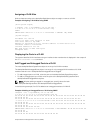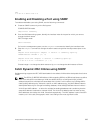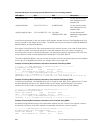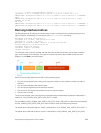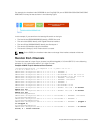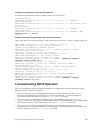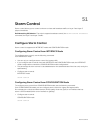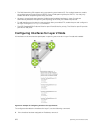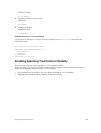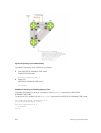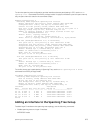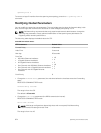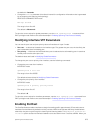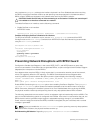
52
Spanning Tree Protocol (STP)
The spanning tree protocol (STP) is a Layer 2 protocol — specified by IEEE 802.1d — that eliminates loops
in a bridged topology by enabling only a single path through the network.
Protocol Overview
By eliminating loops, STP improves scalability in a large network and allows you to implement redundant
paths, which can be activated after the failure of active paths. Layer 2 loops, which can occur in a
network due to poor network design and without enabling protocols like xSTP, can cause unnecessarily
high switch CPU utilization and memory consumption.
The system supports three other versions of spanning tree, as shown in the following table.
Table 67. Dell Networking OS Supported Spanning Tree Protocols
Dell Networking Term IEEE Specification
Spanning Tree Protocol (STP) 802.1d
Rapid Spanning Tree Protocol (RSTP) 802.1w
Multiple Spanning Tree Protocol (MSTP) 802.1s
Per-VLAN Spanning Tree Plus (PVST+) Third Party
Configure Spanning Tree
Configuring spanning tree is a two-step process.
• Configuring Interfaces for Layer 2 Mode
• Enabling Spanning Tree Protocol Globally
Related Configuration Tasks
• Adding an Interface to the Spanning Tree Group
• Modifying Global Parameters
• Modifying Interface STP Parameters
• Enabling PortFast
• Prevent Network Disruptions with BPDU Guard
• STP Root Guard
• Enabling SNMP Traps for Root Elections and Topology Changes
Important Points to Remember
• STP is disabled by default.
Spanning Tree Protocol (STP)
869



